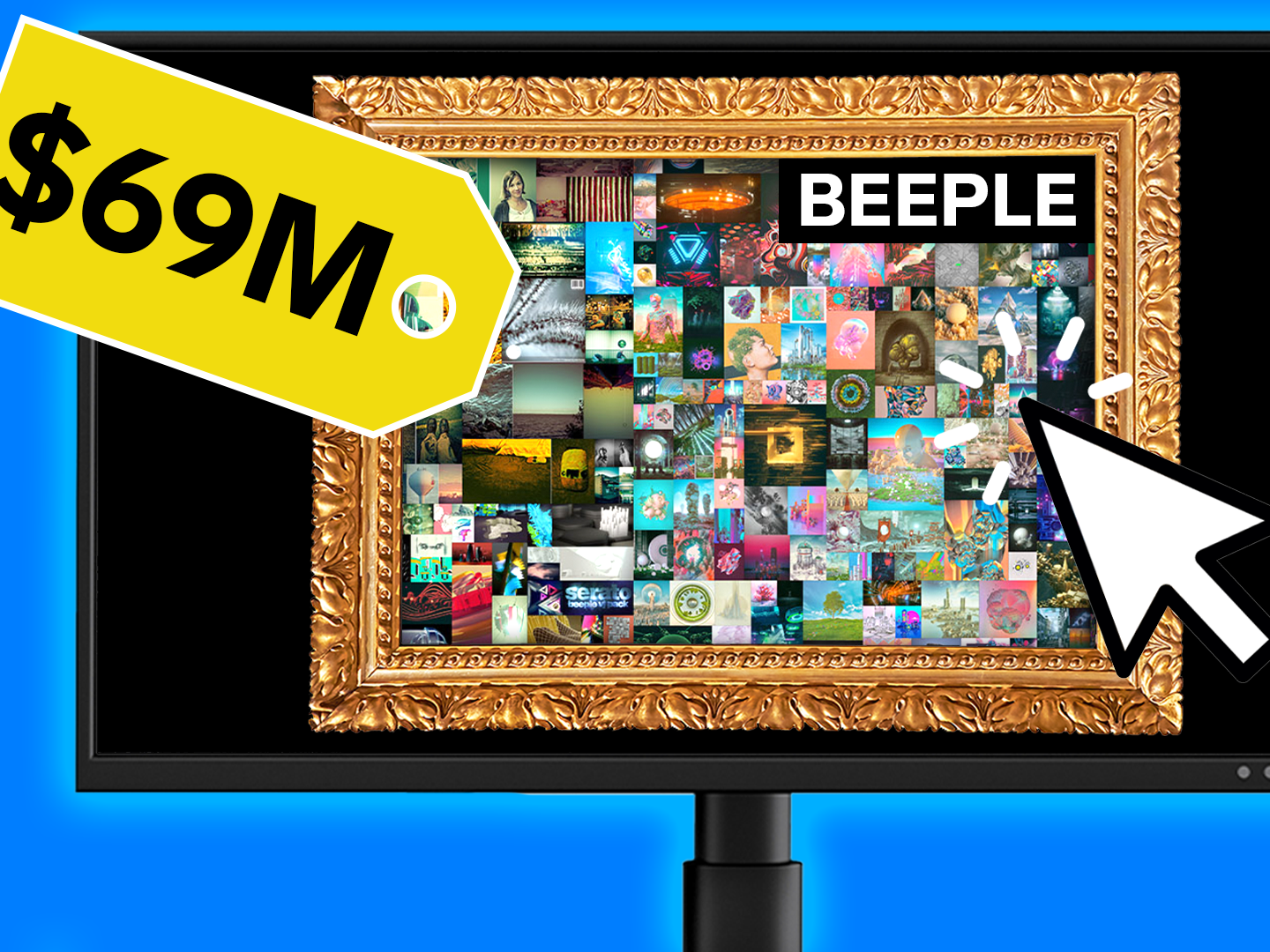
- Investing in crypto art is about assuming ownership of a digital image in hopes it will gain value.
- "This stuff will absolutely go to zero," Mike Winkelmann said on The New York Times' "Sway" podcast.
- The NFT market has surged in the past few months, generating over $1 billion within 30 days.
- See more stories on Insider's business page.
After selling a crypto art piece for nearly $70 million, digital artist Mike Winkelmann – also known as Beeple – said the crypto art market is likely in a bubble.
"[Investing in crypto art] is for people who are looking to take some risks," Winkelmann said in an interview with The New York Times' "Sway" podcast. "This stuff will absolutely go to zero."
Beeple previously told Insider that he believed NFT prices could be in a precarious position.
"I think there's a very good chance it's in a bubble," Winkelmann told Insider.
Winkelmann compared the market of non-fungible tokens, or NFTs, to the internet boom. He said, much like the dawn of the internet, buyers may realize further down the line that prices for NFTs went overboard.
"Just making an NFT does not give it any value," Winkelmann said on the podcast. "There's going to be a moment where we realize we got a little crazy and assigned insane value to crap."
Over the past few months, interest in the NFT market has surged, with NFT marketplaces generating over $1 billion in sales in the past 30 days alone, according to CryptoSlam.
Across numerous NFT marketplaces, people can buy anything from NBA clips to trading cards, 3-D art or music.
The crypto-art pieces maintain value based on their scarcity. When someone buys an NFT they assume ownership of the artwork, inasmuch as they can tie their name to the creator. However, purchasing an NFT does not usually give the buyer any rights to the distribution or use of the NFT on the internet.
Beeple has become something of a symbol in the NFT world - leading the marketplace in multimillion-dollar sales. Winkelmann said NFTs can seem complicated, but it's actually really simple. It's all about proving ownership.
"The more something is widely shared, the more popular it becomes, the more valuable it will become," Winkelmann said. "When you go to The Louvre and take a picture of the Mona Lisa and share it on the internet no one is like 'Wow, I just devalued the Mona Lisa.'"
Miami-based art collector and Beeple collector Pablo Rodriguez-Fraile compared NFTs to gold or Bitcoin.
"People have long used art to store value," Rodriguez-Fraile told Insider. "Crypto extends easily into digital art. This is just a more modern approach to investing in art and using it like someone would use gold or bitcoin."
Even though crypto art may be under a bubble, Winkelmann said he believes it is here to stay and will likely become the future of the traditional art world.
"When the [internet] bubble burst, it didn't wipe out the internet," Winkelmann said. "It wiped out the crap."
Winkelmann just entered the crypto market in October and became one of the most valuable artists within a matter of months. He said the crypto art market will be just as competitive and difficult to earn a living as the traditional art world, despite flack he has been receiving from the art world due to his historic NFT sales.
"It won't be easy for digital artists," Winkelmann said on the podcast. "Nothing has changed in terms of ... some things will have value and a bunch of things will not have value. Just because something's an NFT does not magically give it value."
Ultimately, Winkelmann believes NFTs were inevitable. He sees a future where art is not static, it will not decay or age, but can be updated and viewed across a variety of screens.
Winkelmann has already begun reinvesting his $69.3 million into his art - hiring engineers to work on technology that will bring digital art into the physical world and make it more accessible.
